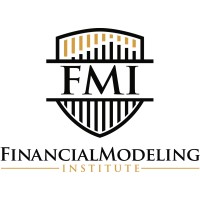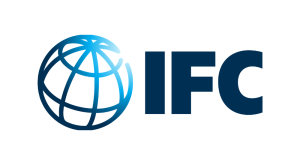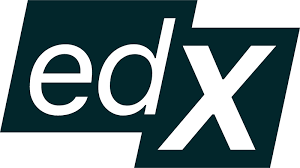Financial modeling is a skill that is extremely useful for anyone who works in the field of finance, accounting, or even business management. Financial modeling courses are available in Ecuador through various institutions and online platforms with great quality and respect to different levels of expertise. The courses enable individuals to polish up their technical skill set in banking, investment, corporate finance, or business entrepreneurship. In this article, we share with you the Top 10 Financial Modeling Courses in Ecuador and provide you with an overview of their content, features, and what makes them valuable for your career growth in the changing financial landscape of Ecuador.
What is Financial Modeling?
Financial Modeling includes analyzing past data, predicting future performance, and testing multiple financial scenarios. Financial modeling is a fundamental tool used to meaningfully support the decision process for businesses, investors, analysts, and other stakeholders.
A financial model, in its essence, is a consolidation of major financial metrics from income statements, balance sheets, and cash flow statements. It is all bundled in a structured form to make a financial forecast.
Financial models can be simple revenue forecasts or more complex models such as discounted cash flow (DCF) analysis, leveraged buyout (LBO) modeling, or merger and acquisition (M&A) scenarios. They are typically constructed on spreadsheet software like Microsoft Excel.
Key Uses of Financial Modeling
1. Business Valuation: Calculating the present and future value of any company is accompanied by financial models to figure out the potential return on investment.
2. Budgeting and Forecasting: By providing models of expected future revenues, expenses and cash flows, companies can use them to properly budget and plan.
3. Risk Management: This modeling allows companies to run different economic scenarios and potentially see if they can adjust to potential risks.
4. Investment Analysis: Financial models aid investors in analyzing whether an opportunity is viable financially and profitable for investment.
Types of Financial Models
- DCF: A strategy for determining a company’s intrinsic worth based on its future cash flows.
- Merger and Acquisition (M&A): Help in analyzing the financial aspects of mergers or acquisitions.
- Leveraged Buyout (LBO): It is used mostly by private equity firms when analyzing potential buyout opportunities.
- Three-Statement Model: It combines an income statement, balance sheet, and cash flow statement into a single conjoined financial model.
Across industries, professionals knowledgeable in financial modeling are needed because they add clarity to complex financial decisions, choose the best investment opportunity, and contribute to the financial health of the organization.
Financial modeling is an important skill that is currently being applied in business finance, investment banking, and equity research, among others.
Importance of Financial Modeling in Ecuador’s Market
1. Economic and Market Analysis
Financial modeling has been increasingly used by professionals to study market trends and predict economic changes as Ecuador diversifies its economy. This is especially relevant in any country with different ways industries are affected by economic shifts.
Using financial models allows professionals to get insights on which sectors are growing and which may not be, and hence helps businesses and investors in making informed decisions.
2. Business Expansion and Investment
Foreign investment attracted by Ecuador, especially to renewable energy, agriculture, and tourism sectors, has made it an attractive destination for foreign investment.
This financial modeling allows us to assess new investments and determine how resources should be allocated expected returns, and the risks of scaling in Ecuador’s ever-changing economy.
3. Financial Planning and Budgeting
In an economy where resource allocation is essential, financial modeling empowers Ecuadorian companies to optimize their budgets. Financial models help companies ensure their financial health and future sustainability through the planning process by way of accurately forecasting expenses and revenues.
Through financial modeling, professionals can simulate inflationary impacts, balance fluctuations, and more that are crucial to the navigation of Ecuador’s economy. It helps businesses hedge risks, mostly in cost and contingent upon uncertainty around commodity prices and foreign exchange rates.
5. Enhancing Career Prospects
Developing skills in financial modeling gives those from Ecuador professional opportunities in investment banking, corporate finance, and consulting.
Financial modeling is rapidly becoming a key skill that can help advance a professional’s career, particularly in companies where company value is increasingly defined by those who can create and interpret models to support high-stakes decisions.
Practicing financial modelling skills paves the way for professionals in Ecuador to become more marketable and useful for their markets, for the economic development of their industries, and for the growth of data and financial stability.
Benefits
| Benefits | Provided by the Courses | Description |
| Diverse Career Options | ✅ | Accounting, Asset Management, Banking, Business Development, Corporate Development, Corporate Finance, Equity Research, Financial Planning & Analysis, Hedge Funds, Investment Banking, Private Equity, Venture Capital |
| Better Salary Packages | ✅ | 1,516,667 CLP/Annum |
| Up-to-date Knowledge | ✅ | Modeling, Financial Statement, Valuation, Forecasting, Decision-Making, Budgeting, Capital Allocation, Balance Sheets, Microsoft Excel |
| Practical Skills | ✅ | Gain Practical Skills through Case Studies, Live Projects and Internships |
| Cost-Effective Learning | ✅ | Budget-friendly Learning with Flexible Payment Options |
| Artificial Intelligence | ✅ | Learn all about AL tools to incorporate them into your financial models |
| In-House Internships | ✅ | Enhance Practical Skills and Add Your Experience in Portfolio through In-House Internships |
| Certification and Credibility | ✅ | Gain industry-recognized and internationally accepted certifications. |
| Placement Opportunities | ✅ | Access to placement opportunities through the Dedicated Placement Teams |
Main Components of Financial Modeling
The foundation of these key basic components is the backbone of general financial modeling used by professionals to make sound financial and strategic decisions. Here are the main components that you will learn in the financial modeling courses in Ecuador.
1. Historical Data Analysis
A financial model consists of historical data which act as a baseline to reveal the past performance of a company. Income statements, balance sheets, and cash flow statements are reviewed over a specified time by analysts who look for trends, patterns, and anomalies that can affect future projections. Setting realistic future growth assumptions means this analysis.
2. Assumptions and Drivers
The model serves as a basis for making forecasts and projections. Keys drivers can be sales growth rate, profit margins, cost of goods sold, and inflation rate. It systematically inputs all these assumptions based on historical data and market research to predict realistic future outcomes.
3. Revenue Forecasting
Revenue projections are based on future sales based on historical trends, current market conditions and industry growth rates. According to the business model, this component includes detailed revenue breakdowns by product, region, or service. For example, in the retail model, revenue forecasting could be done, such as sales per store or unit over a particular period.
4. Cost Projections
The costs are a very important part of any financial model since they define profitability. Fixed costs (such as rent and salaries) and variable costs (such as raw materials) make up cost projections. To understand the relationship between profitability and different operational scenarios, it is essential to model these expenses accurately.
5. CapEx and Depreciation
Assets requiring depreciation over time, such as equipment or infrastructure, that support growth are referred to as capital expenditures. For this reason, it is essential to forecast CapEx, and you must apply depreciation methods like straight line or declining balance to your depreciation impact on both the balance sheet and income statement.
6. Working Capital Management
Working capital represents the amount of credit available to a company to meet short-term liabilities and day-to-day activity. Cash requirements are estimated using inventory, accounts receivable, and accounts payable components. Liquidity and operational stability are important, which means working capital management must be efficient.
7. Financial Statements Integration
The three primary financial statements, the income statement, the balance sheet, and the cash flow statement, are integrated into a comprehensive financial model. Financial analysts can link these statements to simulate how one area (for example, an increase in revenue) will impact the other areas (increase in cash flow and earnings). This lets us integrate the model with the financial transactions in real time for a dynamic model.
8. Sensitivity and Scenario Analysis
With scenario analysis, we can explore the different possible outcomes, depending on which assumptions. Analysts analyse the potential change by adjusting the key drivers, like sales growth, interest rates or cost increases, on profitability and cash flow as well as on the overall financial health. The precision of these predictions is further refined through sensitivity analysis, which shows how the model is sensitive to fluctuations in specific inputs.
9. Valuation
Valuation is an important part of financial modeling to ascertain a company’s worth. Different methods are used to derive the company’s valuation, like discounted cash flow (DCF), comparable company analysis (CCA) and precedent transactions. In investment decision-making, mergers and acquisitions, valuation insights are crucial.
10. Presentation & Visualization
Effective financial models frequently include charts, graphs, and summary tables to display complex data in easy-to-read charts. This representation in terms of visuals helps stakeholders understand the insights and the key takeaways, which then becomes instrumental for the stakeholders to make informed decisions. Essential metrics and trends should be summarised by the presentation layer without confusing the audience with a lot of detailed results.
With this knowledge, professionals can create robust financial models that provide strategic information and be used in multiple financial decisions, including investment analysis or corporate planning.
Why Enrol in Financial Modeling Courses in Ecuador?
There are many benefits of enrolling in financial modeling courses in Ecuador for professionals across every industry. Here are the key advantages:
1. Improved Financial Analysis Skills
A financial modeling course teaches professionals in-depth analysis skills to analyse the company’s performance, project future financials, and make data-driven decisions. Historical Data Analysis, Financial Statement Analysis, and Trend Forecasting are worth these skills as professionals can do better in their job roles.
2. Enhanced Decision-Making Ability
In financial modeling courses, students also learn how to build detailed projections and run different business scenarios which are based on numbers. The ability to simulate multiple outcomes grounded in data helps provide the rigor for more strategic decision-making, such as around investments, pricing strategies and expansion opportunities.
3. Increased Employability and Career Opportunities
As various finance roles are increasingly requiring financial modeling skills, financial modeling course is good for employability. Certifications can take you to the next level to a position like a financial analyst, or corporate finance consultant.
4. Business Metrics Understanding
Financial models delve beyond the surface level to help students grasp key business metrics such as EBITDA, ROI and Operating margins. Mastering these metrics gives you a well-rounded picture of how everything inside a business works and improves making more holistic, stronger decisions.
5. Prepares for High-Impact roles.
Fields that have high-stakes financial decisions, including investment banking, private equity, and corporate finance, require financial modeling. The course will help prepare professionals in valuations, mergers, and acquisitions, as well as risk analysis, for the senior-level roles in finance.
6. Apply Financial Concepts in the Real World
Hands-on projects are common in courses, and participants can apply financial theory to real-world setups. The practical experience aids the learning, making the students seem more ready to tackle the complexities of financial issues in the workplace.
7. Getting Comfortable with Complex Financial Data
One of the core things financial modeling is about is dealing with large amounts of data and complex calculations. Using structured coursework, students gain enough confidence to use advanced data handling tools such as Excel, VBA, and specialised financial software.
8. Networking Opportunities and Peer Learning
Most financial modeling courses in Ecuador offer access to a network of finance professionals, instructors, and industry experts. Students can learn and ask questions from them at any time. These networking and peer interactions can enhance learning.
9. Versatile in Different Industrial Fields
With financial modeling courses, you learn skills that apply to multiple sectors, such as real estate, healthcare, tech, and energy. This versatility allows learners to use them to work in any type of role and shift to any industry.
10. Certifications and Advanced Qualifications
Financial modeling courses in Ecuador can make a good foundation for professionals who want to get certified in CFA, CPA, or CMA. It teaches key financial concepts, modeling skills and valuation techniques which are relevant to the material covered in these certifications.
A decision to take a financial modeling course is a strategic decision by professionals who want to strengthen their finance expertise, increase their marketability, and work in a high-impact role. It allows professionals to gain practical skills and industry-relevant knowledge that gives them an edge across the business today’s world is operating under data.
List of Top 10 Financial Modeling Courses in Ecuador
The list of the top institutes offering financial modeling courses is given below.
| Institutes | Mode | Module Specific Trainers | Mock Interview |
| IIM SKILLS | Online | ✅ | ✅ |
| Instituto Tecnológico de Monterrey (ITESM) | Offline & Online | ✅ | ❌ |
| UDLA (University of the Americas) | Offline & Online | ✅ | ❌ |
| Universidad San Francisco de Quito (USFQ) | Offline & Online | ✅ | ❌ |
| Financial Modeling Institute (FMI) | Online | ✅ | ✅ |
| International Finance Corporation (IFC) | Online | ✅ | ❌ |
| The Knowledge Academy | Online | ✅ | ✅ |
| Coursera | Online | ❌ | ❌ |
| EDX | Online | ❌ | ❌ |
| Udemy | Online | ❌ | ❌ |
1. IIM SKILLS

The FInancial Modeling course in Ecuador are designed to offer students and professionals in-depth financial modeling skills. The course is designed according to the real-world needs in various domains such as finance, investment banking, and corporate sectors.

It focuses on key areas, including financial analysis, forecasting, and valuation. Sessions are conducted live and in an interactive manner with experienced industry experts. Practical insights are achieved along with theoretical knowledge.
IIM SKILLS Financial Modelling Course Content & Modules:
| Module 1 – Basic and Advanced Excel (8-10 hours)
Module 2 – Accounting Concepts and Financial Statements (5-7 hours) | Module 3 – Ratio/KPI Analysis (4-6 hours)
Module 4 – Basics of Financial Modeling (4 hours) |
| Module 5 – Different Types of Financial Models (12-15 hours) | • LBO Model
• M&A Model • Private Equity Return Model • 13 Week Cash Flow Model |
| Module 6 – Business Valuation (7-9 hours) | • Relative Valuation – Trading and Transaction Comps
• DCF Valuation • NAV Approach for Valuation |
This is one of the leading Financial Modeling Institutes in Ecuador, with flexibility in scheduling learning sessions, one-on-one mentorship, and lifetime access to course materials.
| Course | Duration | Fees |
| Financial Modeling Master Course: Self-Paced Course | Self-paced | $670.36 |
| Financial Modeling Master Course: Job Assist Program | 4 months | $1,118.76 |
| Financial Modeling Master Course: Job Guarantee Program | 4 months | $3,360.76 |
Contact Information:
Phone: +91 9580740740
Email: info@iimskills.com
Website: iimskills.com
Explore these industry-specific Financial Modeling Courses in Cameroon and master the in-demand skills, tools, and techniques.
2. Instituto Tecnológico de Monterrey (ITESM)

Financial Modeling courses in Ecuador by ITESM focus on Excel-based modeling skills. This course has several modules on cash flow modeling, valuation techniques and risk analysis.
It is a well-known Financial Modeling Institutes in Ecuador perfect for finance professionals wanting to improve their skills in these areas. ITESM’s reputation and resources provide high-quality content and effective learning support.
| Course | Duration | Fees |
| Finance and Microeconomics | 2 years | Not Available |
| Finance and Accounting | 2 years | Not Available |
Refer to the list of top Financial modeling Courses in Chile
3. UDLA (University of the Americas)

Financial Modeling courses in Ecuador are offered by UDLA around fundamentals of financial statements, forecasting and capital budgeting. It is one of the known Financial Modeling Institutes in Ecuador.
Designed for early to mid-career professionals in general finance, the course is intended to prepare analysts for roles where analytical skills of data interpretation and decision-making models are key.
| Course | Duration | Fees |
| Bachelor of Finance and Banking | 2 years | Not Available |
Explore the top-ranked Financial Modeling Courses in Belgium for your career enhancement!
4. Universidad San Francisco de Quito (USFQ)

The Advanced Financial Modeling courses in Ecuador by Universidad San Francisco de Quito (USFQ) are designed for professionals who are keen to work in high-stakes finance roles.
It covers complex topics like project finance, mergers, acquisitions and equity research. USFQ is known for its experienced faculty that offers practical case studies and hands-on exercises to reinforce learning.
| Course | Duration | Fees |
| Finance in Business Administration | 2 years | Not Available |
Here is an extensive guide to the top-ranked Financial Modeling Courses in Bahrain. Read and explore in-depth.
5. Financial Modeling Institute (FMI)

Financial Modeling courses in Ecuador involve a globally recognised certification offered by FMI. This online training program provides the core modeling competencies and prepares students for rigorous financial analysis.
The FMI certifications from one of the best Financial Modeling Institutes in Ecuador can be helpful in competitive finance roles as they testify to your skills in modeling and knowledge of one.
| Course | Duration | Fees |
| Foundations in Financial Modeling | 15 hours | USD 110 |
| Advanced Finance Modeler | 50-100 hours | USD 690 |
| Chartered Finance Modeler | 75-120 hours | USD 690 |
| Master Financial Modeler | Not Available | Not Available |
Eager to know about the extensive Financial Modeling Courses in Bhutan with placement support? Here is a guide.
6. International Finance Corporation (IFC)

IFC’s Financial Modeling courses in Ecuador are delivered online. It focuses on real-life applications and is particularly beneficial to finance professionals.
Valuation modeling, sensitivity analysis, and risk assessment are all included in the curriculum, which prepares you to make financial decisions as a professional. It is also one of the reputed Financial Modeling Institutes in Ecuador.
| Course | Duration | Fees |
| Introduction to Finance and Accounting | 5-7 days | Not Available |
Have a look at these industry-specific Financial Modeling Courses in London and master the in-demand skills, tools, and techniques.
7. The Knowledge Academy

The Knowledge Academy offers key topics, including capital structure, forecasting, sensitivity analysis and more. These are very useful financial modeling training programs in Ecuador for people who work in corporations or who will be responsible for corporate finance.
It is considered as one of the best Financial Modeling Institutes in Ecuador.
| Course | Duration | Fees |
| Financial Modeling Training Course | 1 Day | USD 295 |
Your search for the best Financial Modeling Courses in Dubai ends here. Do check them out.
8. Coursera

Business and Financial Modeling Specialization offered by Wharton School on Coursera. It provides a broad foundation of financial modeling to Ecuadorian professionals.
The topics discussed in this recognised Financial Modeling Institutes in Ecuador are spreadsheet models, scenario analysis, and risk management.
Students have the option to learn at their own pace with flexible online access, making this financial modeling training program ideal for working professionals.
| Course | Duration | Fees |
| Business and Financial Modeling | Self-paced | USD 60/month |
| Finance and Quantitative Modeling for Analysts | Self-paced | USD 60/ month |
Here’s a guide to the top Financial modeling Courses in Central African Republic with Placement Assistance.
9. EDX

EDX has partnered with the New York Institute of Finance to offer a Financial Modeling and Valuation course online. The course covers financial statement analysis, valuation methods, and risk factors and is meant for finance professionals who want to learn advanced modeling techniques applicable to Ecuador’s rapidly expanding market.
| Course | Duration | Fees |
| Financial Modeling and Analysis | 4 weeks | Free |
| Commercial Property Contracts and Financial Modeling | 4 weeks | Free |
| Introduction to Cash Flow: Modeling and Forecasting | 8 weeks | USD 150 |
Find out the best Financial Modeling Courses in the Dominican Republic for your career enhancement.
10. Udemy

Ecuadorian professionals who are interested in finance and tech can choose the Financial Modeling courses by Udemy for a unique approach, combining data science and financial modeling.
This financial modeling training program in Ecuador covers Python, excel, and data visualisation, along with forecasting and valuation techniques. Using an online format allows the students and professionals in Ecuador to do it at their own pace.
Check out IIM SKILLS for more professional courses and programs to help you find your career path.
Frequently Asked Questions
1. What is financial modeling, and why is it essential for professionals?
Financial modeling is a process of creating abstract representations of real-world scenarios to help make decisions. Financial modeling is a prerequisite that many professionals must master as it aids in the analytical skills to be able to asses investments, manage budgets, and predict business performance. In finance, banking, or corporate strategy roles, this expertise is especially valuable.
2. Can financial modeling skills in the above mentioned Financial modeling Institutes in
Ecuador will offer career opportunities?
Employers in finance, investment, and corporate sectors in Ecuador are very keen to inculcate financial modeling skills. Professionals with these skills can do things like financial forecasting, budgeting and valuation. With companies now increasingly valuing data-driven decision-making, getting these skills can help open doors in areas such as financial analysis, corporate finance or investment banking. Therefore skills offered by these Financial Modeling Institutes in Ecuador are beneficial.
3. Is there any online option for financial modeling courses in Ecuador?
Yes, there are online financial modeling courses in Ecuador that reputable institutions offer making learning flexible, programs from IIM SKILLS, Coursera, Udacity, and FMI, among others, offer online options with globally recognized certification.
Conclusion
Taking financial modeling courses in Ecuador can be a great choice to divert to a career in finance. Professionals with financial forecasting, valuation, and analysis skills can play a big role in helping business strategies and driving financial growth. Whether you are a beginner or a seasoned professional in the industry, there are courses available in Ecuador and everywhere globally. These financial modeling training programs cover different skill levels and needs of the industry. It is the way to go for those who wish to grow in their career.

